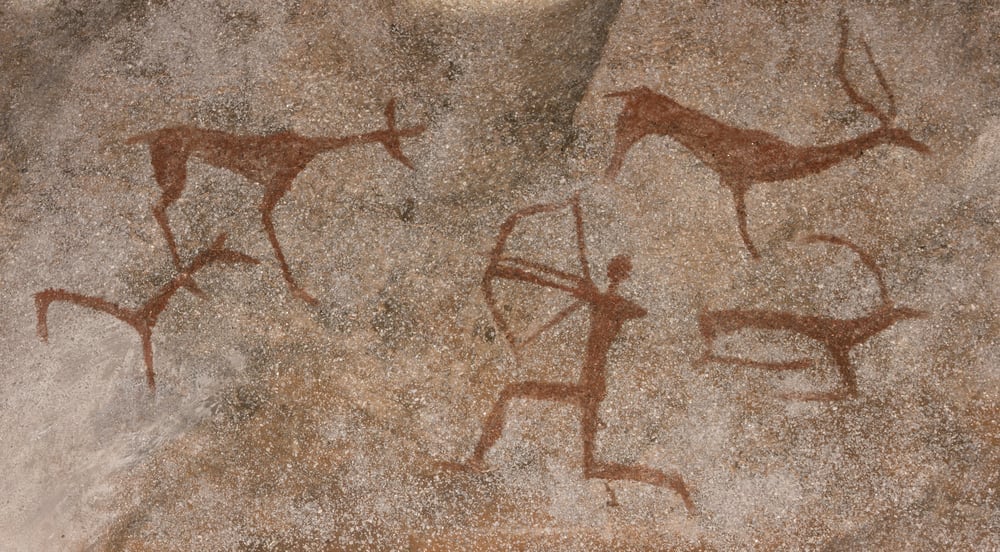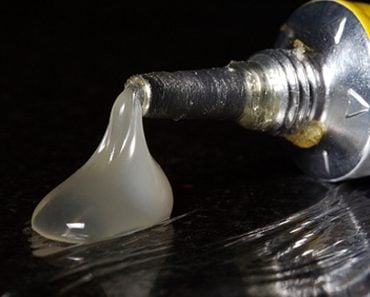Table of Contents (click to expand)
The stable temperature and humidity in caves, a lack of human contact, and long-lasting painting materials have combined to allow many ancient cave paintings to survive in nearly pristine condition.
Imagine walking through the Iberian peninsula, in modern-day Spain, and stumbling across a hidden cave entrance. Overcoming your fears, you click your flashlight to life and slip into the unknown. Little do you know that more than 60,000 years ago, a prehistoric artist entered that same cave to leave one of the earliest examples of human art. Deep in the sheltered recess of the cave, as you shine your flashlight on the scene, you note that it is remarkably clear and well-preserved.
We see such examples of ancient cave art preserved all over the world, from the caves of Lascaux to recently discovered paintings on the island of Borneo that is being hailed as the oldest figurative art ever discovered. The question is: how did such cave paintings survive for tens of thousands of years, when other signs of early civilizations have been lost to the sands of time?
Recommended Video for you:
The History Of Cave Paintings
The first cave paintings weren’t discovered until the end of the 19th century, and the claims that they were from Paleolithic times weren’t believed, since this ran so contrary to previous anthropological beliefs about early humans and their cognitive abilities. A steady stream of additional discoveries in the 20th century confirmed that early humans were more expressive and capable than previously believed.
Throughout France and Spain, a number of exciting discoveries brought more attention to this field, and cave paintings have become critical lenses into the history of Neanderthals and modern man. More than 150 sites in these two countries alone have provided invaluable insight to the past. The majority of the cave paintings that have been discovered depict symbols and animals, sometimes boasting hundreds of images in the same cave. This gives a clear picture into some of the fauna present at the time these paintings were made, as well as the level of sophistication and symbolic language of prehistoric man.

Lascaux Caves
The Lascaux Caves, discovered in 1940, held the title of the oldest known cave paintings, dating roughly 17,000 years in age. However, in recent years, the timeline has been flung much farther back, with exciting discoveries in Borneo (dating approximately 40,000-52,000 years old), the Gabardung caves in Australia (at least 28,000 years old) and the Iberian peninsula (~64,000 years old). The global search for cave paintings continues, as each new discovery brings new revelations into a history that is otherwise nearly invisible.
The Nature Of Cave Paintings
As we all know, nature is the most gradually destructive and creative force on the planet. Take a look at the Grand Canyon or the smoothly weathered tops of the Appalachian Mountains and you will see the evidence of this insistent power. For this reason, the remains of ancient civilizations and early man are difficult, if not impossible, to find and study. Tools, structural foundations, artifacts and remains gradually break down and disappear, particularly after tens of thousands of years.

Science Of Their Resilience
However, cave paintings are uniquely able to defend against the ravages of time. To begin with, the paints and dyes used by these early artists were organic in nature, such as iron or hematite, which would combine to form a pigment called ochre once they began to oxidize. This pigment could be mixed with charcoal or burned bones, and thickened into a paint with animal fat or other natural oils. These pigments were not available everywhere, and likely had to be sought out, and were likely considered valuable. Due to the discovery of pigments and paints near burial and religious sites, it is suggested that such paintings were often ceremonial or sacred in nature. The pigments themselves, such as iron oxide and carbon black (charcoal), are highly resistant to fading, unless exposed to fire or chemicals.
In some cases of limestone caves, there is also a process known as rainwater seeping, in which water seeping through the cracks of the rock will form a bicarbonate layer or coating, which effectively glazes the paintings on the wall, allowing them to retain their surprisingly vivid hues thousands of years later.
Perhaps the most important factor in preserving these paintings is their removal from the elements. Caves that aren’t subject to water level changes or structural fluctuation from tectonic movement/volcanic activity are very stable places. The temperature and humidity are well-regulated and change minimally across long time spans. Erosion and corrosion are simply not threats in a closed-off cave, which has allowed these cave paintings to exist without decay!
The Destructive Nature Of Discovery
The final factor that has allowed these cave paintings to survive since prehistoric times is the absence of humans. Some of these caves may have been uninhabited or untouched for millennia; once a tribe or group left the region and their artistic efforts behind, it may have never been occupied again! As we have seen in countless examples, human beings are notoriously destructive once we find something beautiful. The over-commercialization of certain national parks in the United States comes to mind, as do the astronomic prices some people pay to summit Everest in supreme comfort, leaving their trash behind for others to clean.

The Lascaux Caves, mentioned above, experienced precisely this type of detrimental fame; at the peak of its tourist draw, more than 100,000 people were visiting these legendary caves every year. The millions of camera flashes and the exhalations of carbon dioxide within the enclosed space were proving destructive to the paintings, so the cave was eventually sealed off. A replica of the cave walls was erected instead. Many other caves and archaeologically valuable sites around the world have imposed similar restrictions on tourists in order to preserve the integrity of this previous history.
A Final Word
Ancient cave paintings are remarkable windows to the past, but they are also delicate pieces of art that can easily be compromised. While isolation from nature (and humans) and the resilient pigments and tools they were made with have kept these cave paintings safe for millennia, it is important that humanity’s eagerness to study and enjoy these relics doesn’t end up destroying them in the process!
References (click to expand)
- Hradil, D., Grygar, T., Hradilová, J., & Bezdička, P. (2003, April). Clay and iron oxide pigments in the history of painting. Applied Clay Science. Elsevier BV.
- (1982) The "Archaeology of Lascaux Cave - jstor. JSTOR
- Aubert, M., Setiawan, P., Oktaviana, A. A., Brumm, A., Sulistyarto, P. H., Saptomo, E. W., … Brand, H. E. A. (2018, November 7). Palaeolithic cave art in Borneo. Nature. Springer Science and Business Media LLC.













